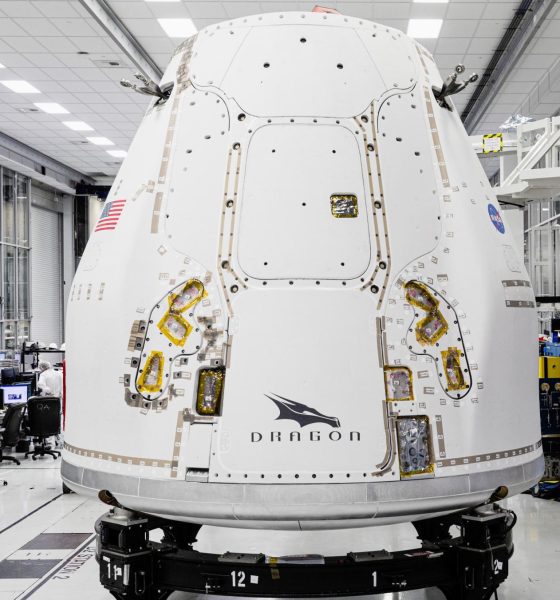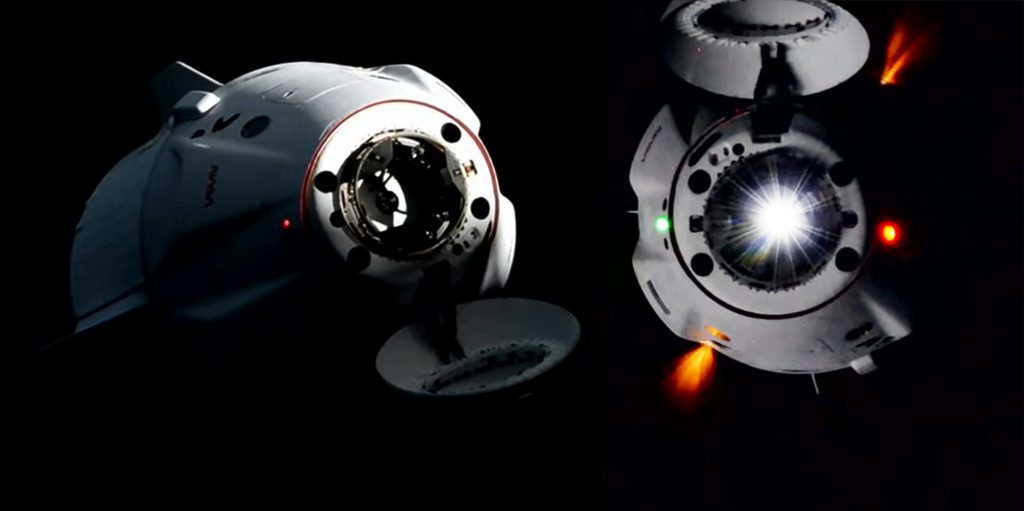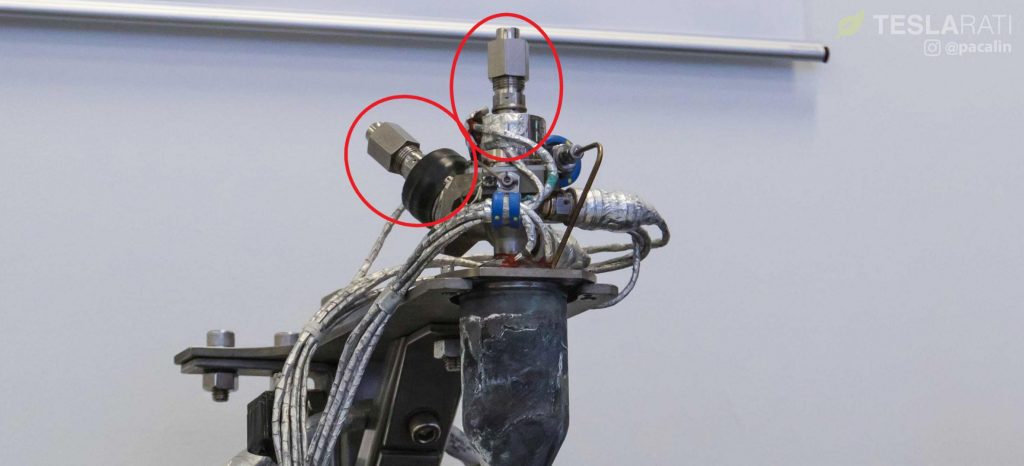

News
SpaceX, NASA blame Cargo Dragon leak on faulty valve, delay launch further
NASA and SpaceX have delayed Cargo Dragon’s CRS-25 space station resupply mission another two weeks after the company narrowed down the cause of the spacecraft’s rare leak.
Instead of the mission’s original June 7th target, which was eventually pushed back to June 10th and then June 28th when SpaceX discovered signs of a possible fuel leak near one of the spacecraft’s many ‘Draco’ thrusters, NASA and SpaceX will now attempt to launch CRS-25 no earlier than (NET) July 11th.
That makes CRS-25 something exceptionally rare: a SpaceX launch delayed more than a month by an issue discovered just a few days before liftoff. Alongside its growing cadence and record of successful launches, Falcon 9 has quickly become one of the most reliable and on-time rockets currently operating. Once the rocket has been integrated, SpaceX will occasionally run into a day or two of delays caused by minor technical issues or poor weather, but anything more than a few days has become exceptionally rare.

The same has generally been true for Dragon and Dragon 2, although Dragon 2 spacecraft are much newer and less experienced than Falcon rockets and do often run into minor issues. However, it has been years since a Dragon mission was delayed multiple weeks just a few days before its initial launch target. CRS-25’s issues are extraordinarily rare for SpaceX.
On June 13th, NASA distributed an update on those issues, revealing that SpaceX had narrowed down the cause of the anomalous fuel vapor readings that delayed the launch to a single “Draco thruster valve inlet joint.” Dragon spacecraft have 16 Draco maneuvering thrusters, each of which has at least two “valve inlet joints” for fuel (monomethylhydrazine or MMH) and oxidizer (dinitrogen tetroxide or NTO).
Dragon’s smaller pressure-fed Draco thrusters operate at relatively low pressures, but the hypergolic (auto-igniting) fuel and oxidizer they burn are extremely uncooperative and corrosive and create tough conditions for valves to live and operate. In general, valves are already a major source of headaches in spaceflight, where the thermal and chemical environments are bipolar and unforgiving in the extreme, the stakes are about as high as they get, and basic realities of physics demand that all hardware be as light and minimal as possible.


Given Draco’s impressive history, with hundreds of thrusters flown on dozens of different orbital Dragon missions since 2010, it’s likely that SpaceX will fix the problem without issue and prevent it from happening again. Still, the leak still serves as a reminder that making large and complex spacecraft work reliably is an immense challenge. When that spacecraft is meant to be reused, the difficulty is magnified even further.
One slight positive did come from the latest delay, however: SpaceX’s upcoming June 17th Starlink launch no longer has to worry about impinging upon a NASA Dragon launch just 11 days later. In fact, while unlikely, SpaceX may even have time for a second Starlink launch from Pad 39A to fill the slight gap CRS-25 has created in Falcon 9’s June manifest.

Elon Musk
Elon Musk and Tesla AI Director share insights after empty driver seat Robotaxi rides
The executives’ unoccupied tests hint at the rapid progress of Tesla’s unsupervised Robotaxi efforts.

Tesla CEO Elon Musk and AI Director Ashok Elluswamy celebrated Christmas Eve by sharing personal experiences with Robotaxi vehicles that had no safety monitor or occupant in the driver’s seat. Musk described the system’s “perfect driving” around Austin, while Elluswamy posted video from the back seat, calling it “an amazing experience.”
The executives’ unoccupied tests hint at the rapid progress of Tesla’s unsupervised Robotaxi efforts.
Elon and Ashok’s firsthand Robotaxi insights
Prior to Musk and the Tesla AI Director’s posts, sightings of unmanned Teslas navigating public roads were widely shared on social media. One such vehicle was spotted in Austin, Texas, which Elon Musk acknowleged by stating that “Testing is underway with no occupants in the car.”
Based on his Christmas Eve post, Musk seemed to have tested an unmanned Tesla himself. “A Tesla with no safety monitor in the car and me sitting in the passenger seat took me all around Austin on Sunday with perfect driving,” Musk wrote in his post.
Elluswamy responded with a 2-minute video showing himself in the rear of an unmanned Tesla. The video featured the vehicle’s empty front seats, as well as its smooth handling through real-world traffic. He captioned his video with the words, “It’s an amazing experience!”
Towards Unsupervised operations
During an xAI Hackathon earlier this month, Elon Musk mentioned that Tesla owed be removing Safety Monitors from its Robotaxis in Austin in just three weeks. “Unsupervised is pretty much solved at this point. So there will be Tesla Robotaxis operating in Austin with no one in them. Not even anyone in the passenger seat in about three weeks,” he said. Musk echoed similar estimates at the 2025 Annual Shareholder Meeting and the Q3 2025 earnings call.
Considering the insights that were posted Musk and Elluswamy, it does appear that Tesla is working hard towards operating its Robotaxis with no safety monitors. This is quite impressive considering that the service was launched just earlier this year.
Elon Musk
Starlink passes 9 million active customers just weeks after hitting 8 million
The milestone highlights the accelerating growth of Starlink, which has now been adding over 20,000 new users per day.

SpaceX’s Starlink satellite internet service has continued its rapid global expansion, surpassing 9 million active customers just weeks after crossing the 8 million mark.
The milestone highlights the accelerating growth of Starlink, which has now been adding over 20,000 new users per day.
9 million customers
In a post on X, SpaceX stated that Starlink now serves over 9 million active users across 155 countries, territories, and markets. The company reached 8 million customers in early November, meaning it added roughly 1 million subscribers in under seven weeks, or about 21,275 new users on average per day.
“Starlink is connecting more than 9M active customers with high-speed internet across 155 countries, territories, and many other markets,” Starlink wrote in a post on its official X account. SpaceX President Gwynne Shotwell also celebrated the milestone on X. “A huge thank you to all of our customers and congrats to the Starlink team for such an incredible product,” she wrote.
That growth rate reflects both rising demand for broadband in underserved regions and Starlink’s expanding satellite constellation, which now includes more than 9,000 low-Earth-orbit satellites designed to deliver high-speed, low-latency internet worldwide.
Starlink’s momentum
Starlink’s momentum has been building up. SpaceX reported 4.6 million Starlink customers in December 2024, followed by 7 million by August 2025, and 8 million customers in November. Independent data also suggests Starlink usage is rising sharply, with Cloudflare reporting that global web traffic from Starlink users more than doubled in 2025, as noted in an Insider report.
Starlink’s momentum is increasingly tied to SpaceX’s broader financial outlook. Elon Musk has said the satellite network is “by far” the company’s largest revenue driver, and reports suggest SpaceX may be positioning itself for an initial public offering as soon as next year, with valuations estimated as high as $1.5 trillion. Musk has also suggested in the past that Starlink could have its own IPO in the future.
News
NVIDIA Director of Robotics: Tesla FSD v14 is the first AI to pass the “Physical Turing Test”
After testing FSD v14, Fan stated that his experience with FSD felt magical at first, but it soon started to feel like a routine.

NVIDIA Director of Robotics Jim Fan has praised Tesla’s Full Self-Driving (Supervised) v14 as the first AI to pass what he described as a “Physical Turing Test.”
After testing FSD v14, Fan stated that his experience with FSD felt magical at first, but it soon started to feel like a routine. And just like smartphones today, removing it now would “actively hurt.”
Jim Fan’s hands-on FSD v14 impressions
Fan, a leading researcher in embodied AI who is currently solving Physical AI at NVIDIA and spearheading the company’s Project GR00T initiative, noted that he actually was late to the Tesla game. He was, however, one of the first to try out FSD v14.
“I was very late to own a Tesla but among the earliest to try out FSD v14. It’s perhaps the first time I experience an AI that passes the Physical Turing Test: after a long day at work, you press a button, lay back, and couldn’t tell if a neural net or a human drove you home,” Fan wrote in a post on X.
Fan added: “Despite knowing exactly how robot learning works, I still find it magical watching the steering wheel turn by itself. First it feels surreal, next it becomes routine. Then, like the smartphone, taking it away actively hurts. This is how humanity gets rewired and glued to god-like technologies.”
The Physical Turing Test
The original Turing Test was conceived by Alan Turing in 1950, and it was aimed at determining if a machine could exhibit behavior that is equivalent to or indistinguishable from a human. By focusing on text-based conversations, the original Turing Test set a high bar for natural language processing and machine learning.
This test has been passed by today’s large language models. However, the capability to converse in a humanlike manner is a completely different challenge from performing real-world problem-solving or physical interactions. Thus, Fan introduced the Physical Turing Test, which challenges AI systems to demonstrate intelligence through physical actions.
Based on Fan’s comments, Tesla has demonstrated these intelligent physical actions with FSD v14. Elon Musk agreed with the NVIDIA executive, stating in a post on X that with FSD v14, “you can sense the sentience maturing.” Musk also praised Tesla AI, calling it the best “real-world AI” today.








